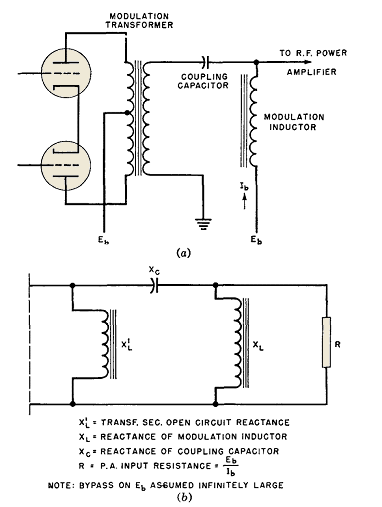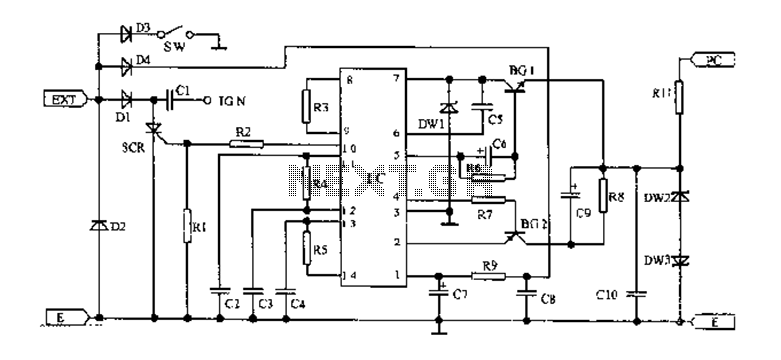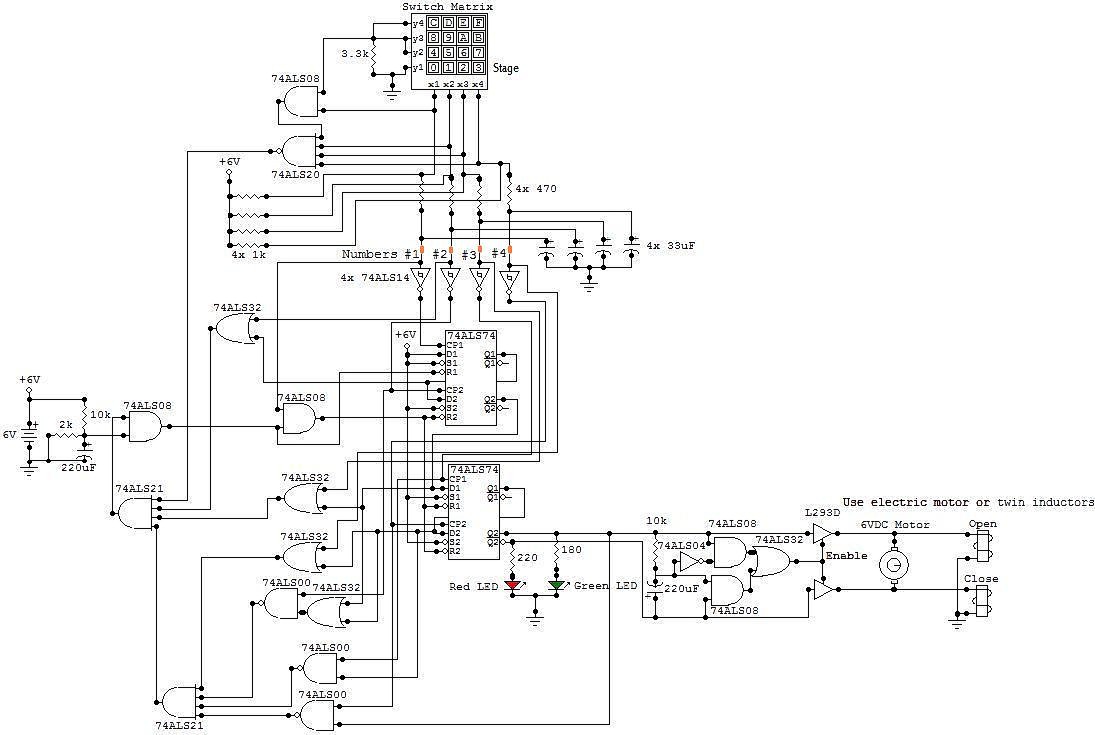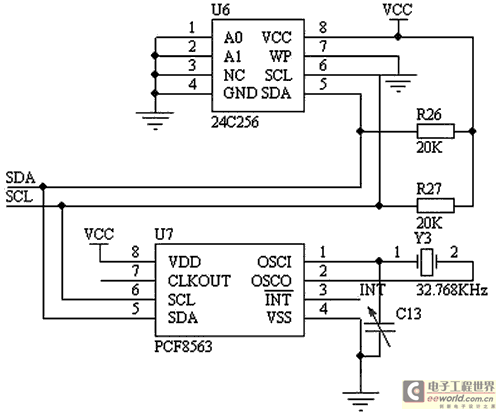
Electronic Transformers Modulation

Wave-filter principles are utilized in various circuits beyond filters, such as in the design of modulation transformers for high-level amplitude-modulated radio transmitters. Some of these transformers are quite large. In plate-modulated power amplifiers, the modulator power necessary for achieving 100 percent modulation is half of the power amplifier input. Enhanced audio quality and reduced component size are accomplished through a method referred to as the pi-filter technique. For low modulation frequencies, this method can be represented by the circuit diagram of Fig. 145(a). The modulator is typically a class B amplifier. The output transformer, coupling capacitor, and modulation reactor form a pi-section high-pass filter, as shown in Fig. 145(b). The components are sized to have a characteristic impedance equal to the equivalent plate input resistance (EB/IB) of the modulated power amplifier. Previously, these components were constructed larger than practical. The reactances of the transformer secondary and reactor were each 3 to 4 times the power amplifier plate input resistance, while the coupling capacitor reactance was a fraction of this resistance at the lowest modulation frequency. The pi-filter offers advantages such as reducing the two inductive reactances to 1.41 times the terminating load resistance and increasing the capacitive reactance to the same value at a low frequency f1, which is 1.41 times the cut-off frequency of the filter. Down to f1, the filter maintains a tube load with nearly 100 percent power factor, although the ohmic value increases to 190 percent of the terminating load resistance at f1. Consequently, the voltage required for constant output rises to 138 percent of normal. This is somewhat mitigated by the tendency of class B amplifier tubes to provide higher voltages with increased tube load impedances. For instance, in a specific radio transmitter, the type 805 modulator tubes deliver 1,035 peak volts per side into a normal tube load of 1,860 ohms. At 30 cycles, the lowest audio frequency, the load impedance rises to 3,600 ohms, and the voltage needed for full output is 1,440 volts. Plotting a 3,600-ohm load line on the tube curves indicates that 1,275 volts will be delivered at 30 cycles, which is 1 dB down from normal. To achieve similar frequency response using the older "brute force" method, at least double the values of transformer and reactor inductance and significantly more coupling capacitance would have been required. The voltage across the capacitor increases as capacitance decreases, but surge voltages often occur across the coupling capacitor during operation. The voltage rating was previously determined more by these surges than by normal voltage. With the pi-filter method, the normal voltage at low frequencies cannot be significantly exceeded during operation due to the limitations in voltage output of the tubes. Thus, the reduction in coupling capacitance is substantial and is only minimally offset by increases in voltage rating. These points are clarified by referring to Fig. 146. The phase shift between transformer and load voltages is 90° at f1. At cut-off (70 percent of f1), the tube voltage for constant output is 224 percent of the load voltage. A tube would not deliver such high voltage with this type of load, particularly when the power factor is low. The corresponding capacitor voltage at the cut-off frequency is 284 percent of ER; it would also not be delivered for the same reason. The useful frequency range extends beyond f1. Another advantage of the pi-filter in comparison to the older method is the high power factor load down to frequency f1. The maximum tube load phase angle above f1 is 8°, and at frequencies exceeding 3f1, the phase angle is zero. At 3f1, the tube load impedance equals R, allowing the tube to operate into a unity power-factor load of constant value at frequencies above 3f1. For the same size of inductive components, the "brute force" system would have required significantly larger components.
The pi-filter technique is a sophisticated application of wave-filter principles that enhances the performance of modulation transformers in high-level amplitude-modulated radio transmitters. The design intricacies involve careful consideration of component sizing to achieve optimal impedance matching and efficiency. The use of a class B amplifier as the modulator plays a critical role in maintaining audio fidelity while minimizing the physical size of the components.
The pi-section high-pass filter configuration, which integrates the output transformer, coupling capacitor, and modulation reactor, is engineered to provide a characteristic impedance that aligns with the power amplifier's plate input resistance. This alignment is crucial for maximizing power transfer and ensuring that the modulated signal maintains integrity across a range of frequencies.
The advantages of the pi-filter method are particularly pronounced in its ability to maintain a high power factor across a broad frequency spectrum, thereby improving the overall efficiency of the system. The reduction in reactive components allows for a more compact design without sacrificing performance, which is essential in modern radio transmitter applications where space and efficiency are paramount.
Furthermore, the pi-filter's ability to limit surge voltages across the coupling capacitor enhances reliability and longevity, as the components are less likely to experience breakdown under normal operating conditions. This reliability is further supported by the inherent characteristics of class B amplifier tubes, which adapt to varying load conditions, thus ensuring consistent voltage delivery even as the load impedance changes.
In conclusion, the pi-filter method represents a significant advancement in modulation transformer design, offering improved audio quality, reduced component size, and enhanced operational efficiency, thereby setting a new standard for high-level amplitude-modulated radio transmitters.Wave-filter principles are applied in many circuits other than filters. An example is the design of modulation transformers for high-level amplitude-modulated radio transmitters. Some of these transformers are large. In plate-modulated power amplifiers, the modulator power required to produce 100 per cent modulation is half of the power amplifier
input. Improved audio quality and reduction in size of components are achieved through the use of what may be called the pi-filter method. For low modulation frequencies, this method may be illustrated by means of the circuit diagram of Fig.
145(a). The modulator usually is a class B amplifier. Output transformer OCL, coupling capacitor, and modulation reactor combine to form a pi-section high-pass filter, Fig. 145(b). The elements are proportioned for characteristic impedance equal to the equivalent plate input resistance EB/IB of the modulated power amplifier.
Formerly these components were made as large as was considered practical. Transformer secondary and reactor reactances were each 3 to 4 times the power amplifier plate input resistance, and the coupling capacitor reactance was a fraction of this resistance, at the lowest modulation frequency. Advantages of the pi-filter are a reduction of the two inductive reactances to 1. 41 times the terminating load resistance, and increase in capacitive reactance to the same value, at a low frequency f1, which is 1.
41 times cut-off frequency of the filter. Down to f1 the filter maintains a tube load of almost 100 per cent power factor, although the ohmic value rises to 190 per cent of the terminating load resistance at f1. The voltage required for constant output rises to 138 per cent of normal. Partly compensating for this defect is the tendency of class B amplifier tubes to deliver higher voltages with higher tube load impedances.
Thus, in a certain radio transmitter, the type 805 modulator tubes deliver 1, 035 peak volts per side into a normal tube load of 1, 860 ohms. At 30 cycles, the lowest audio frequency, the load impedance rises to 3, 600 ohms, and the voltage required for full output is 1, 440 volts.
Plotting a 3, 600-ohm load line on the tube curves shows that 1, 275 volts will be delivered at 30 cycles, which is 1 db down from normal. To obtain the same frequency response with the older "brute force" method, at least twice the values of transformer and reactor inductance and much more coupling capacitance would have been necessary.
The voltage across the capacitor increases as the capacitance decreases, but surge voltages often exist across the coupling capacitor in service. The voltage rating was formerly determined more by these surges than by normal voltage. With the pi-filter method, the normal voltage at low frequencies cannot be greatly exceeded in service, owing to the limitation in voltage output of the tubes.
Hence, the reduction in coupling capacitance is a real one and is offset very little by increases in voltage rating. These points are made clearer by reference to Fig. 146. Phase shift between transformer and load voltages is 90 ° at f1. At cut-off (= 70 per cent of f1) the tube voltage for constant output is 224 per cent of the load voltage.
A tube would not deliver so much voltage with this type of load, especially when the power factor is so low. The corresponding capacitor voltage at cut-off frequency is 284 per cent of ER; it would not be delivered either, for the same reason.
The useful frequency range is higher than f1. Another advantage of the pi-filter over the older method is the high power factor load down to frequency f1. The maximum tube load phase angle above f1 is 8 °, and at frequencies above 3f1 the phase angle is zero.
At 3f1 the tube load impedance is equal to R. Hence the tube works into a unity power-factor load of constant value at frequencies above 3f1. For the same size of inductive components, the "brute force" system would h 🔗 External reference
The pi-filter technique is a sophisticated application of wave-filter principles that enhances the performance of modulation transformers in high-level amplitude-modulated radio transmitters. The design intricacies involve careful consideration of component sizing to achieve optimal impedance matching and efficiency. The use of a class B amplifier as the modulator plays a critical role in maintaining audio fidelity while minimizing the physical size of the components.
The pi-section high-pass filter configuration, which integrates the output transformer, coupling capacitor, and modulation reactor, is engineered to provide a characteristic impedance that aligns with the power amplifier's plate input resistance. This alignment is crucial for maximizing power transfer and ensuring that the modulated signal maintains integrity across a range of frequencies.
The advantages of the pi-filter method are particularly pronounced in its ability to maintain a high power factor across a broad frequency spectrum, thereby improving the overall efficiency of the system. The reduction in reactive components allows for a more compact design without sacrificing performance, which is essential in modern radio transmitter applications where space and efficiency are paramount.
Furthermore, the pi-filter's ability to limit surge voltages across the coupling capacitor enhances reliability and longevity, as the components are less likely to experience breakdown under normal operating conditions. This reliability is further supported by the inherent characteristics of class B amplifier tubes, which adapt to varying load conditions, thus ensuring consistent voltage delivery even as the load impedance changes.
In conclusion, the pi-filter method represents a significant advancement in modulation transformer design, offering improved audio quality, reduced component size, and enhanced operational efficiency, thereby setting a new standard for high-level amplitude-modulated radio transmitters.Wave-filter principles are applied in many circuits other than filters. An example is the design of modulation transformers for high-level amplitude-modulated radio transmitters. Some of these transformers are large. In plate-modulated power amplifiers, the modulator power required to produce 100 per cent modulation is half of the power amplifier
input. Improved audio quality and reduction in size of components are achieved through the use of what may be called the pi-filter method. For low modulation frequencies, this method may be illustrated by means of the circuit diagram of Fig.
145(a). The modulator usually is a class B amplifier. Output transformer OCL, coupling capacitor, and modulation reactor combine to form a pi-section high-pass filter, Fig. 145(b). The elements are proportioned for characteristic impedance equal to the equivalent plate input resistance EB/IB of the modulated power amplifier.
Formerly these components were made as large as was considered practical. Transformer secondary and reactor reactances were each 3 to 4 times the power amplifier plate input resistance, and the coupling capacitor reactance was a fraction of this resistance, at the lowest modulation frequency. Advantages of the pi-filter are a reduction of the two inductive reactances to 1. 41 times the terminating load resistance, and increase in capacitive reactance to the same value, at a low frequency f1, which is 1.
41 times cut-off frequency of the filter. Down to f1 the filter maintains a tube load of almost 100 per cent power factor, although the ohmic value rises to 190 per cent of the terminating load resistance at f1. The voltage required for constant output rises to 138 per cent of normal. Partly compensating for this defect is the tendency of class B amplifier tubes to deliver higher voltages with higher tube load impedances.
Thus, in a certain radio transmitter, the type 805 modulator tubes deliver 1, 035 peak volts per side into a normal tube load of 1, 860 ohms. At 30 cycles, the lowest audio frequency, the load impedance rises to 3, 600 ohms, and the voltage required for full output is 1, 440 volts.
Plotting a 3, 600-ohm load line on the tube curves shows that 1, 275 volts will be delivered at 30 cycles, which is 1 db down from normal. To obtain the same frequency response with the older "brute force" method, at least twice the values of transformer and reactor inductance and much more coupling capacitance would have been necessary.
The voltage across the capacitor increases as the capacitance decreases, but surge voltages often exist across the coupling capacitor in service. The voltage rating was formerly determined more by these surges than by normal voltage. With the pi-filter method, the normal voltage at low frequencies cannot be greatly exceeded in service, owing to the limitation in voltage output of the tubes.
Hence, the reduction in coupling capacitance is a real one and is offset very little by increases in voltage rating. These points are made clearer by reference to Fig. 146. Phase shift between transformer and load voltages is 90 ° at f1. At cut-off (= 70 per cent of f1) the tube voltage for constant output is 224 per cent of the load voltage.
A tube would not deliver so much voltage with this type of load, especially when the power factor is so low. The corresponding capacitor voltage at cut-off frequency is 284 per cent of ER; it would not be delivered either, for the same reason.
The useful frequency range is higher than f1. Another advantage of the pi-filter over the older method is the high power factor load down to frequency f1. The maximum tube load phase angle above f1 is 8 °, and at frequencies above 3f1 the phase angle is zero.
At 3f1 the tube load impedance is equal to R. Hence the tube works into a unity power-factor load of constant value at frequencies above 3f1. For the same size of inductive components, the "brute force" system would h 🔗 External reference





